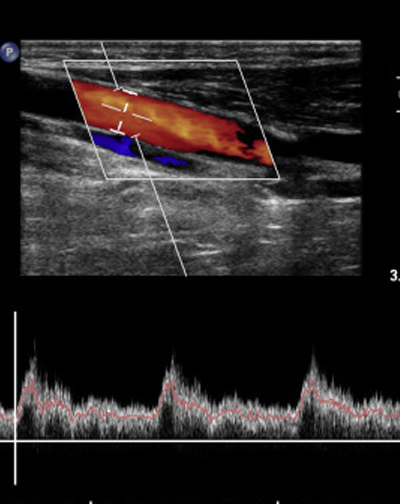
Sonography & Doppler for Fistula
Sonography and Doppler are often used in the evaluation and management of fistulas, which are abnormal connections between blood vessels or other organs.
In the case of a fistula involving blood vessels, ultrasound with Doppler can be used to assess blood flow and detect the presence of a fistula. Doppler ultrasound uses sound waves to detect the movement of blood cells and can provide information on the direction and velocity of blood flow.
For example, in the case of an arteriovenous fistula (AVF), which is a connection between an artery and a vein, ultrasound with Doppler can be used to evaluate blood flow through the AVF and the veins downstream. This can help assess the functionality of the AVF, as well as detect potential complications such as stenosis (narrowing) or thrombosis (clot formation).
Ultrasound with Doppler can also be used to guide the placement of needles or catheters during fistula procedures, such as percutaneous transluminal angioplasty (PTA) or stenting.
Overall, ultrasound with Doppler is a non-invasive and safe imaging modality that can provide valuable information for the evaluation and management of fistulas.
